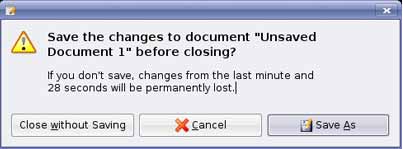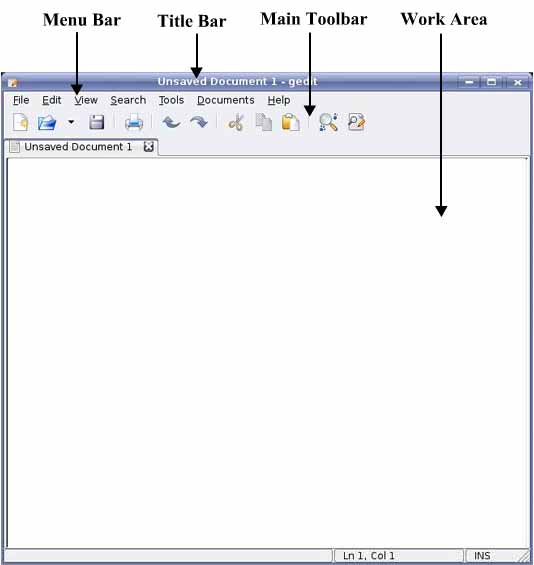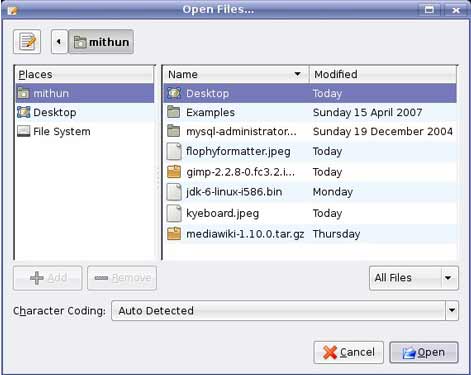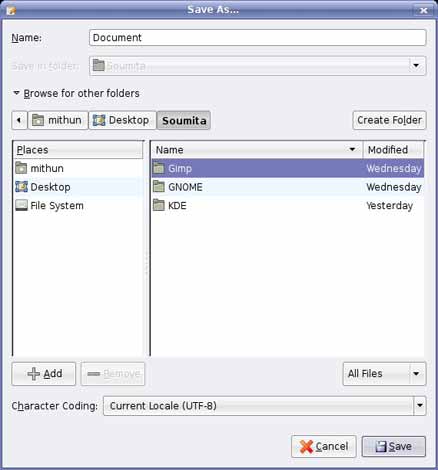Text Editing
Contents
Starting the Text Editing Application
1. Click on Start Applications
2. Go to Utilities
3. Click on Text Editor
The gedit editor will now display. There are other editors available, but we will use gedit for now. The components of the screen are shown below.
Because we will be making extensive use of the Menu bar, we will make use of the following convention in using the functions of the menu bar.
• File->Save as
Will mean exactly the same as
• Click File on the Menu bar.
• Click the Save option in the menu.
Close gedit
• File->Quit
This will close all open documents and exit gedit. If you have made any modifications to open documents, gedit will remind you that the document has not been saved and ask you whether you wish to save or keep it. It will also give you the option of canceling the Quit operation.

Open a file
One of the advantages that text editors provide for us is the facility to save our work and recall it at a later time. We can then print our work or make further changes (edit). In addition, we are able to create many versions of the same document, each of which can be saved on our hard drive under an appropriate name.
To open a document:
• File->Open.
The Open dialogue will appear. In general, this will point to your home directory.
In this case, the Open dialogue is pointing to the directory /home/mithun.
1. If necessary, navigate to the desired directory.
2. Highlight the file you wish to open.
3. Click Open.
If you wish to open a file contained on your floppy, navigate to the directory /mnt/floppy.
On the top right of the Open dialogue, there are three important icons:
Up one level: Pressing this icon will move you to the parent of the current directory.
Create new directory: This option allows you to create a new directory in the current directory. In order to be able to do so, you will need the appropriate user rights.
Default directory: Pressing this icon will move you to the default directory.
This is useful if you have moved through several directories and wish to return to your starting point in the directory tree. This will be different for each user.
Create a new document
We will use the terms document and file interchangeably.
To create a new document from scratch:
• File->New
This will display a blank screen in which you can create a document. This document will be based on default settings. Default settings are ones which are set up for you automatically.
Save the file to a location on a drive
When you work with a document on your computer, the working form resides in the computer's RAM. This is temporary memory used for your current activities. Since RAM is volatile, when the computer is switched off, everything that is in RAM is automatically lost. In order to keep your work you will need to transfer the contents of RAM to your hard disk. This process is called saving.
When you save a document, you give it a name and you specify where it is to be stored.
Save an existing document
If you have opened a document and made some changes, the process of saving it is very simple:
• File->Save
This will change the contents of the stored version so that it is identical to the version that is displayed on your screen. In this case, the previous version on disk is overwritten. If you use File->Save in a newly created document, gedit will automatically assume that you wish to use File->Save as.
Save a new document
When you create a document from scratch, there is no version stored on disk. To save the file to disk:
• File->Save as.
The Save as dialogue will appear. In general, this will point to your home directory. Itis very similar in appearance and functionality to the Open dialogue.
1. If necessary, navigate to the directory in which you wish to save the file.
2. Enter a name into the Name window.
3. Click Save.
For the moment we will not be concerned with all the options in the Save as dialogue.
Closing the Text Editing Application
• File->Quit


